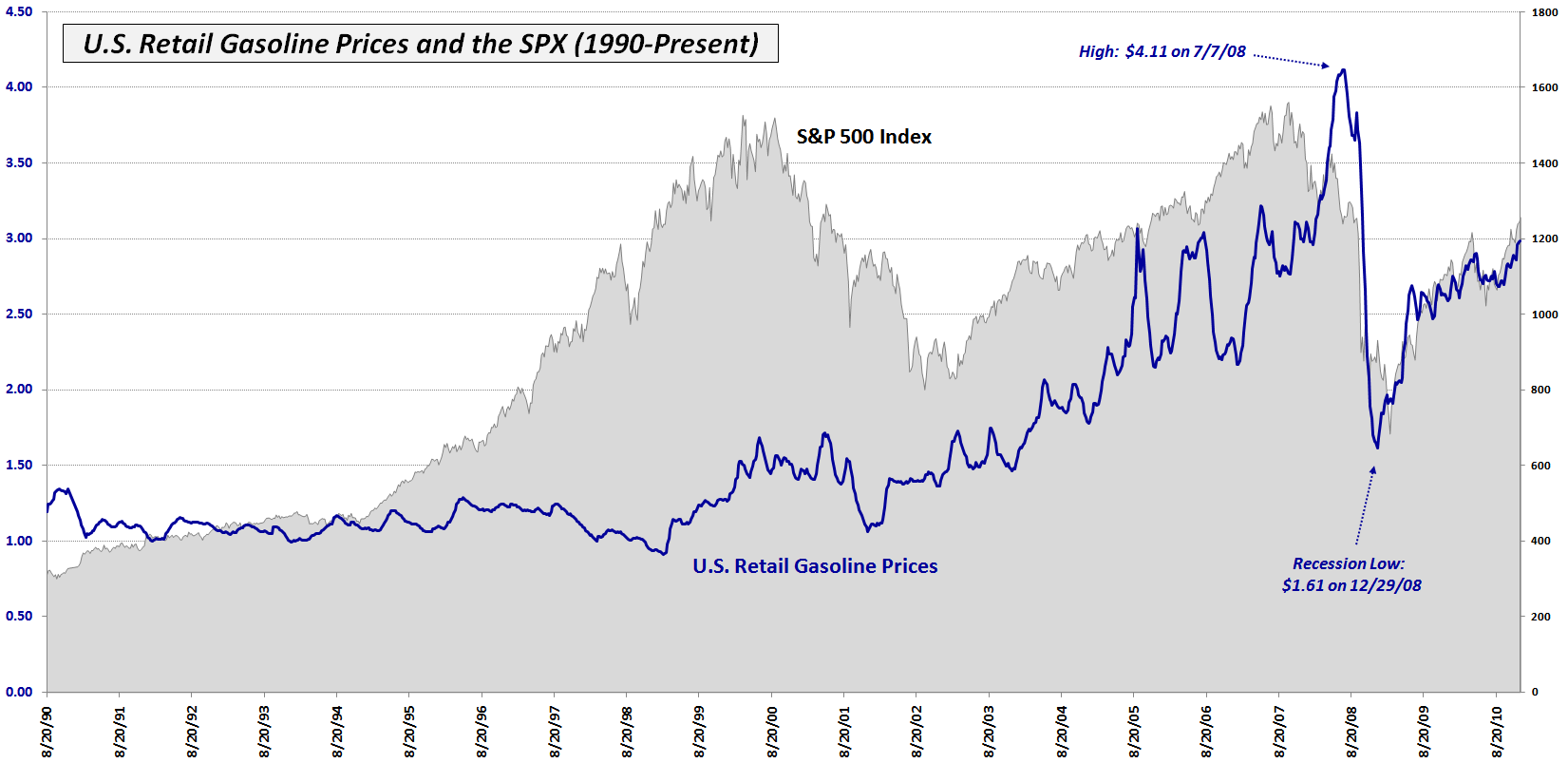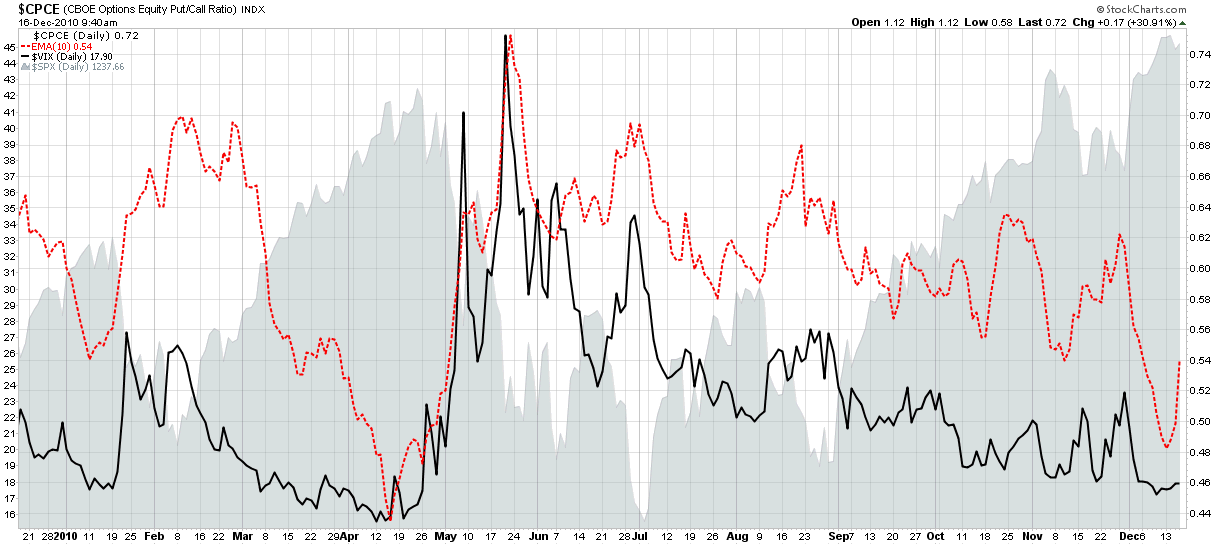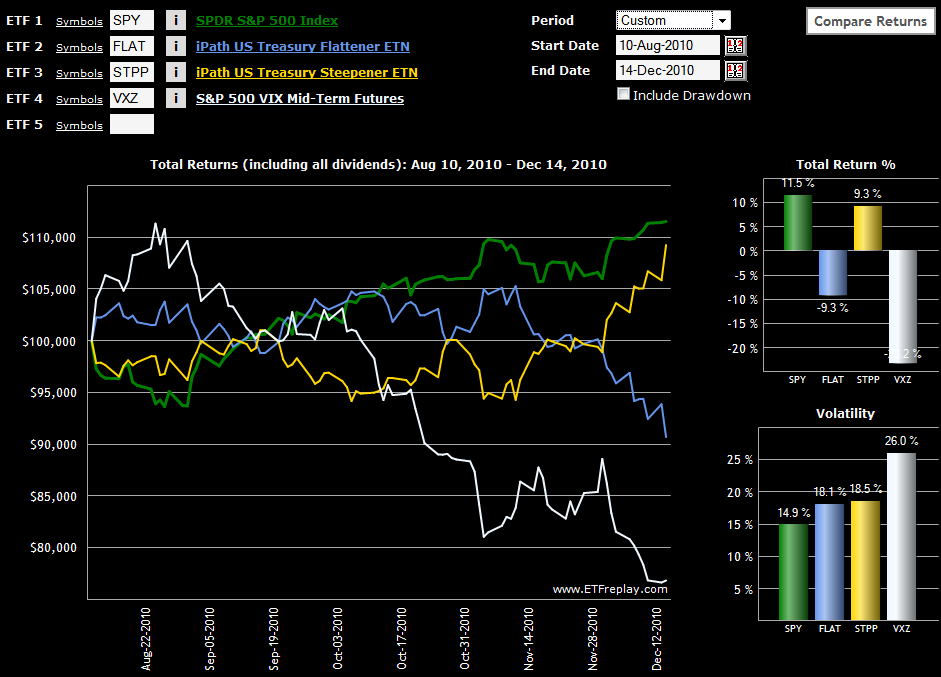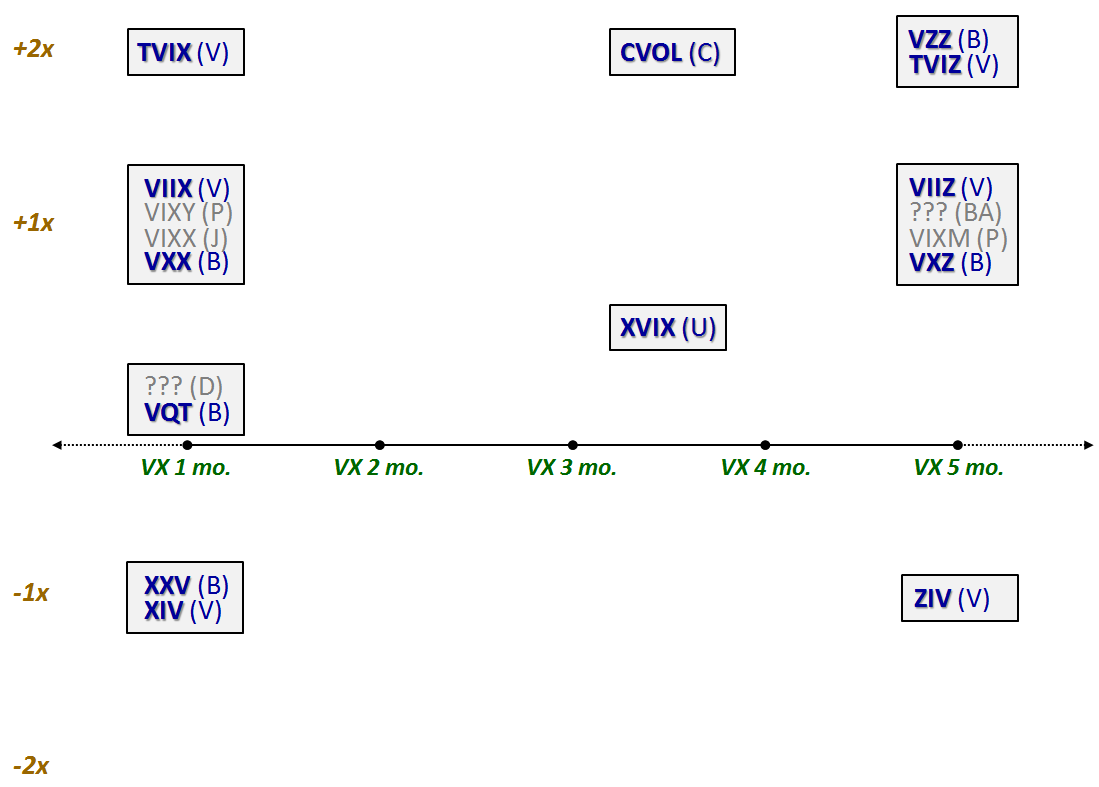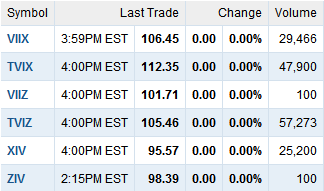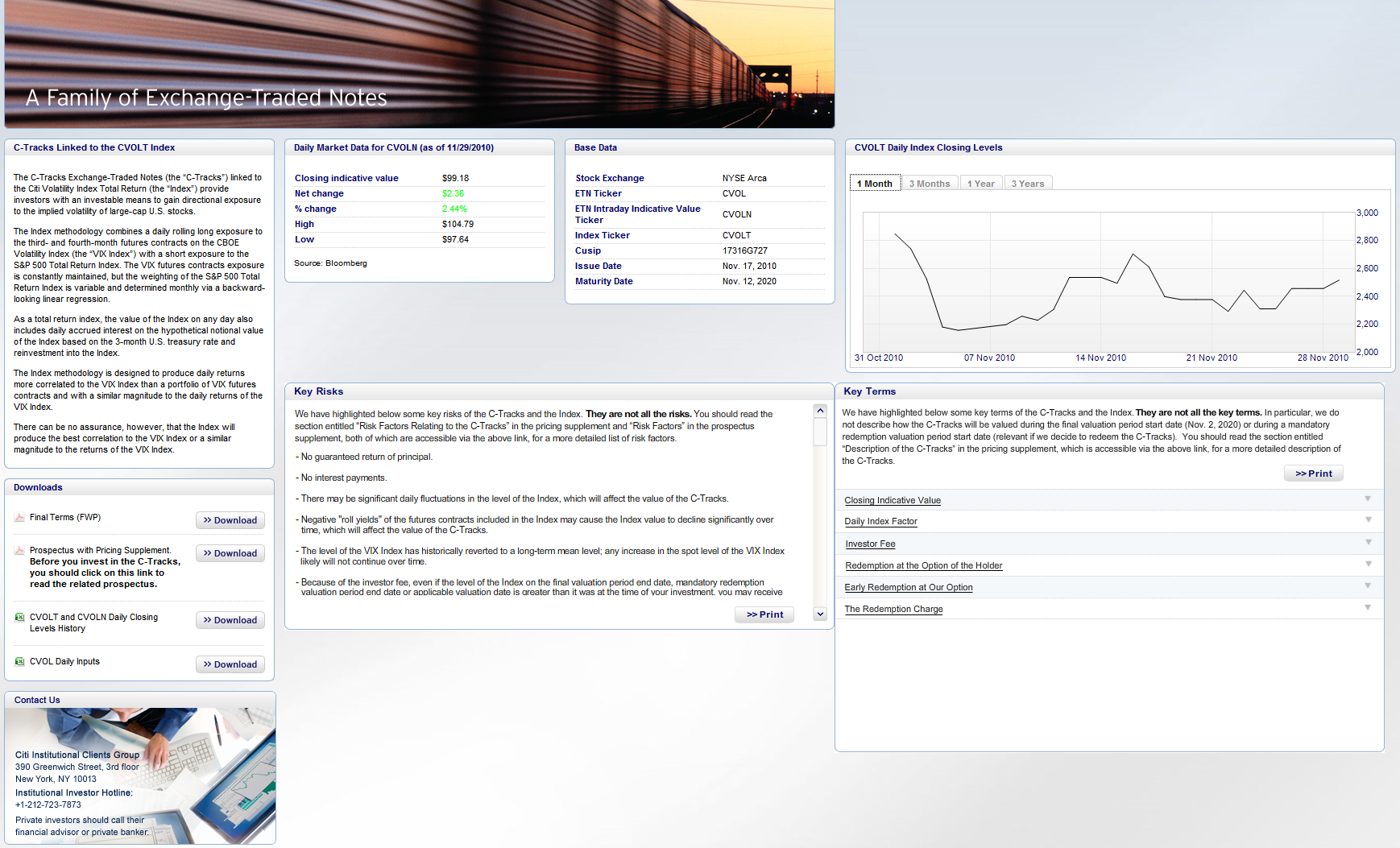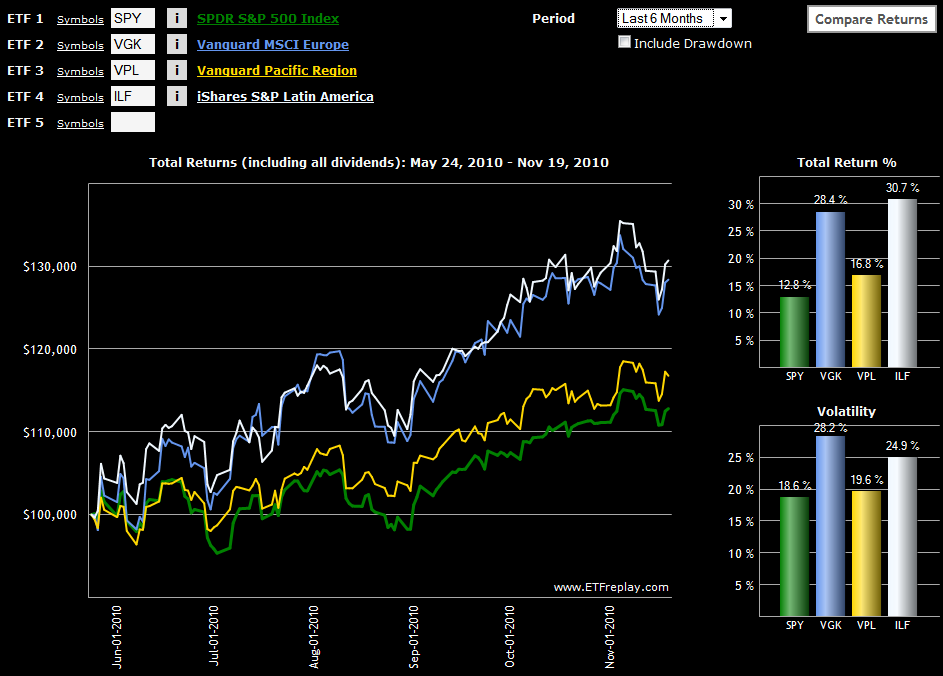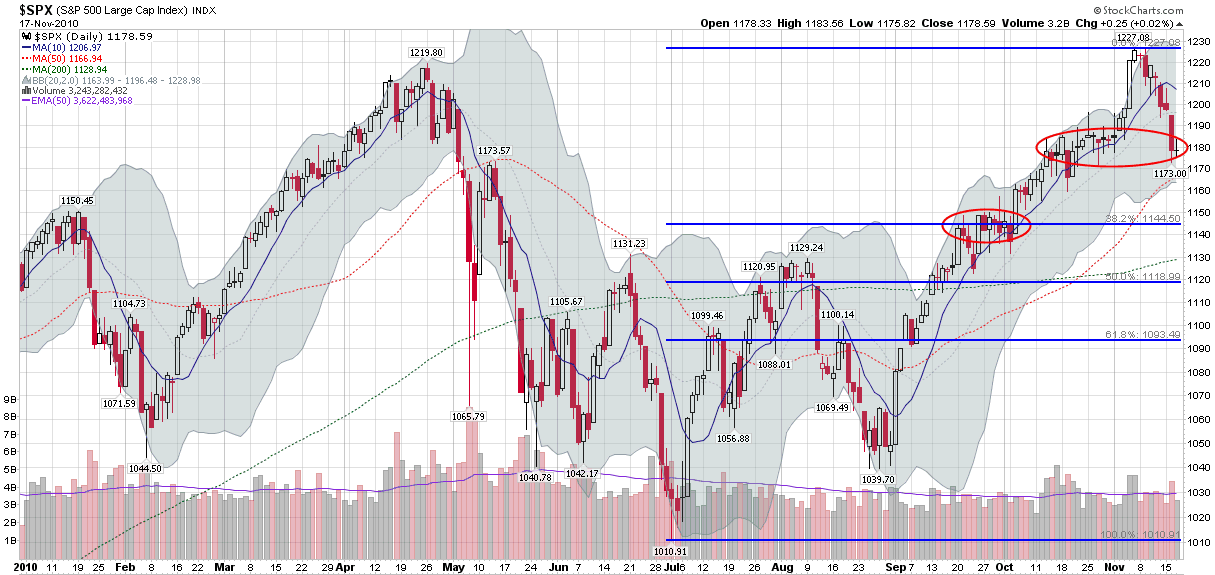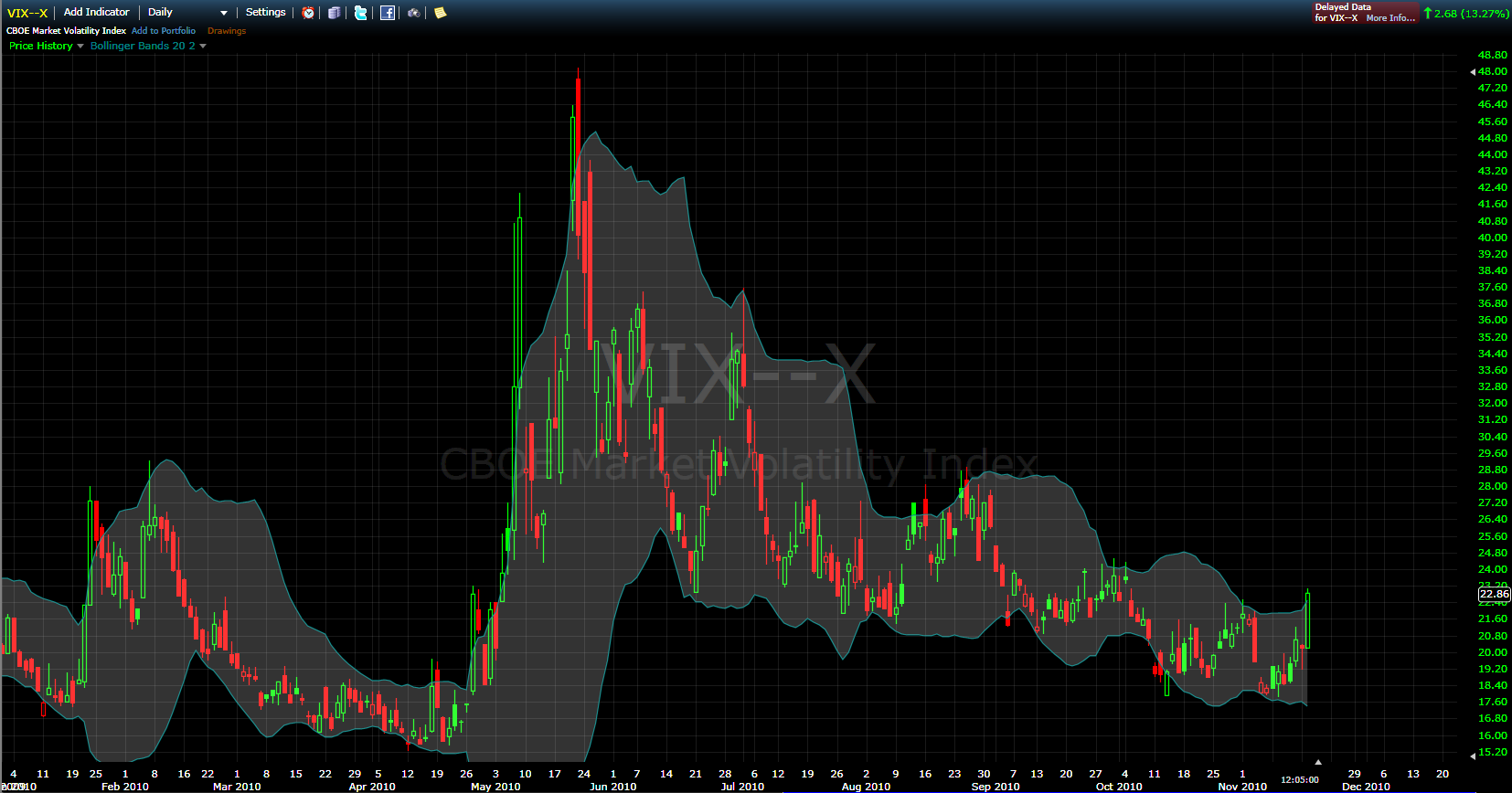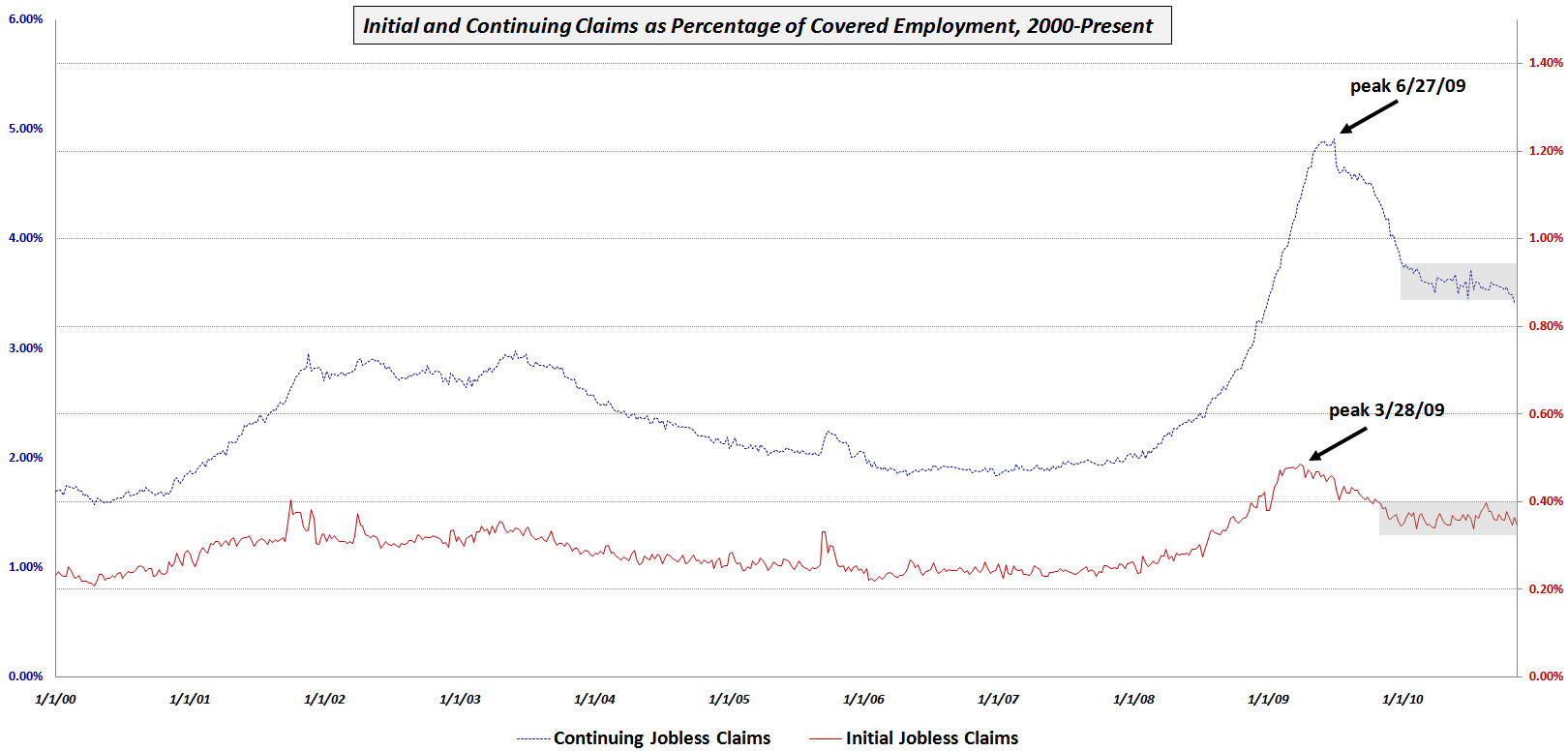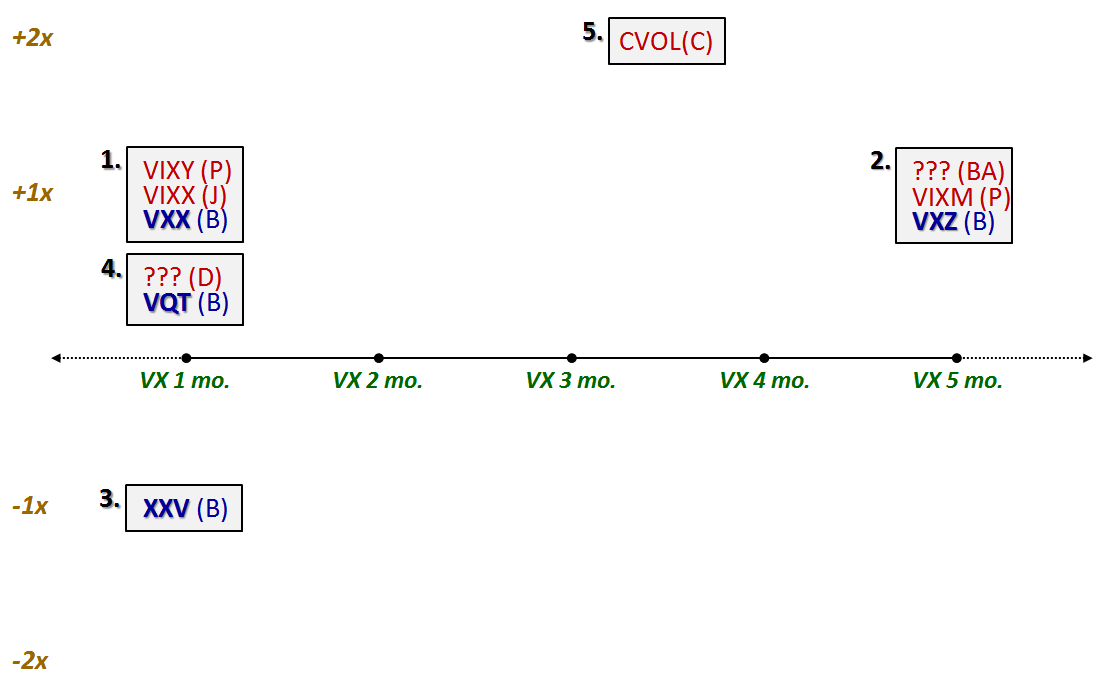As of today, only four VIX exchange-traded products (ETNs and ETFs) are available for trading. All of these have been Barclays products and three of the four carry the iPath brand name. In descending order of volume, the VIX-based ETNs currently being traded are:
- iPath S&P 500 VIX Short-Term Futures ETN (VXX)
- iPath S&P 500 VIX Mid-Term Futures ETN (VXZ)
- iPath Inverse S&P 500 VIX Short-Term Futures ETN (XXV)
- Barclays ETN+ S&P VEQTOR ETN (VQT)
Five other companies (ProShares, Direxion, Citigroup, Jefferies and Bank of America) have VIX-based ETNs and ETFs (in the case of ProShares) in registration or have made announcements about forthcoming products, but I am unaware of any target launch dates. In order to simplify matters a little, henceforth I will start to refer to these products as exchange-traded products or ETPs.
In order to attempt to simplify and catalog the growing universe of available and announced VIX-based ETPs, I have assembled the chart below. The chart uses the y-axis to plot the leverage used (all are standard +1x ETPs, with the exception of the +2x
CVOL and the sole inverse product, the -1x XXV) and the x-axis to plot the target maturity. VX 1 mo. is short for
VIX futures with a constant maturity of one month, etc.
I have identified each ETP by its ticker (I do not yet have tickers for the Direxion or Bank of America products) and have coded these with a one or two letter suffix to identify the issuer (P for ProShares, D for Direxion, C for Citigroup, J for Jefferies and BA for Bank of America.) ETPs that are currently traded are in bold blue; ETPs that have not yet been launched are in red font.
The final piece of information involves grouping the ETPs into five clusters which represent the five approaches currently being used for VIX-based ETPs. For all intents and purposes, the ETPs in each cluster are (or appear to be, at this juncture) equivalent in construction and should behave in a similar manner. Group #1 for instance, has been the dominant theme in the volatility ETP space to date. The focus here is on VIX futures with a constant maturity of 30 days. VXX was the first to market, but competitive offerings from Jefferies and ProShares are on the way. Group #2 uses a similar approach, but with a 5-month target maturity. Group #3 is the inverse of Group #1.
Group #4 represents what I consider to be a second generation of products, with a dynamic allocation of 2.5% to 40% (see
Barclays VEQTOR ETN Begins Trading for details), which is why the group is shown here as having less than +1x leverage.
The newest VIX ETP approach comes from Citigroup, where their CVOL product not only targets a new portion of the VIX futures
term structure (3-4 months), but adds a +2x leverage component and also includes a “variable weighted short position in the S&P 500 Total Return Index” as well.
Things continue to get more and more interesting in the VIX ETP space. I look forward to the launch of some of these newer products and to seeing how they perform.
It should go without saying that as the VIX ETP landscape continues to evolve, I will do my best to attempt to map it in a meaningful manner.
Related posts:
Disclosure(s): none
